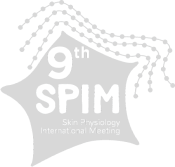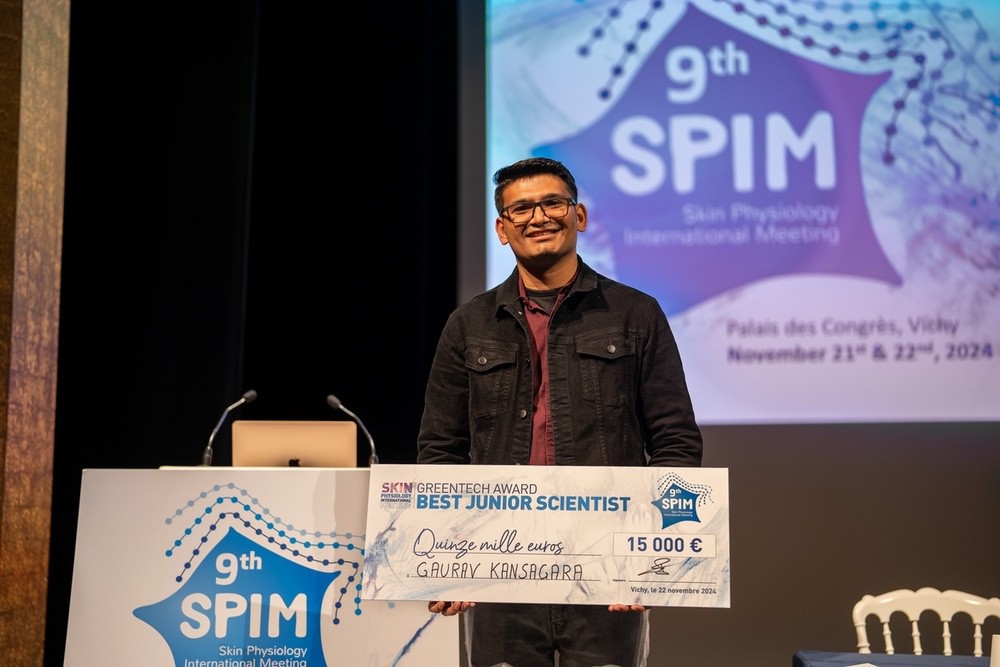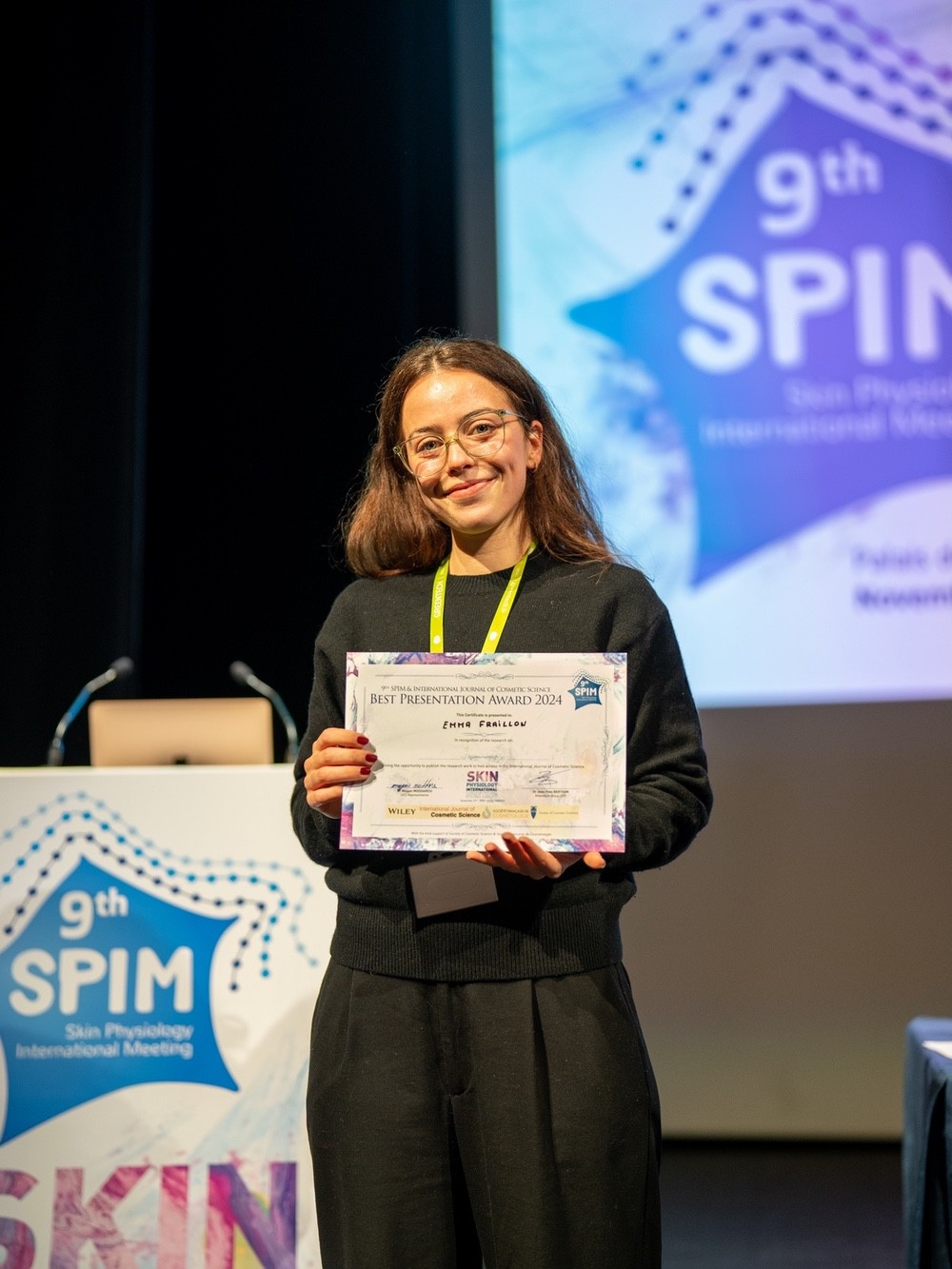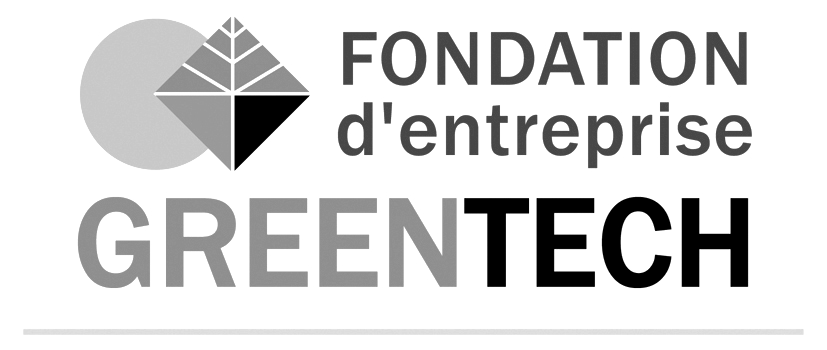The Scientific Committee selected the “Best Junior Scientist 2024“ from 9 young researchers (PhD or post-PhD) who where nominated and invited to present their results to Scientists and Industrials coming from the Dermatology and Cosmetic Worlds.
The Scientific Committee awarded a young and expert scientist for his outstanding work, Gaurav KANGAGARA. Gaurav is a PhD student working in Professor Colin Jamora’s laboratory at the Institute for Stem Cell Science and Regenerative Medicine (inStem), which is an autonomous research institute under the Department of Biotechnology, Government of India, located in Bangalore, India.
He was awarded a grant of 15,000€.
His PhD thesis focuses on understanding The mechanisms underlying fibrosis development in a mouse model of systemic sclerosis and skin fibrosis.
Summary of the work:
Utilizing a novel mouse model developed in our laboratory, we have identified a matricellular protein called Mindin (SPON2), which differentially activates different subpopulations of fibroblasts in the skin dermis and contributes to the pathogenesis of skin fibrosis in scleroderma and systemic sclerosis. Our prior research demonstrated that when treated with Mindin, mouse dermal fibroblasts exhibit increased migration, contraction, and collagen secretion, along with the production of pro-inflammatory cytokines, reflecting key hallmarks of fibroblast behaviour in fibrosis. Notably, we also found that Mindin is upregulated in the skin of patients with the fibrotic disease scleroderma. We have identified the minimal domain of Mindin that is responsible for activating dermal fibroblasts. We employed this domain to isolate the cognate receptor(s) that mediate the effects of Mindin on these cells. Our ongoing work focuses on validating these receptor candidates and elucidating the downstream signalling components mediating the effects of Mindin on dermal fibroblasts.
Despite fibrotic diseases accounting for up to 45% of all deaths in the industrialized world, effective pharmacological treatments are currently lacking. In light of this, our research has highlighted a novel target protein and identified new pathways that could pave the way for developing new effective therapies for treating scleroderma and other fibrotic diseases.
For the « Best SPIM Poster 2024 », Olivia GROSS-AMAT ’s poster was unanimously selected by all participants and awarded a €4,000 grant.
Olivia GROSS-AMAT, PhD was working at the IDiBE (Instituto de Investigación, Desarrollo e Innovación en Biotecnología Sanitaria de Elche) till the end of 2024. Her scientific topic was : Development of a preclinical bio printed micro physiological human skin model.
« The aim of this study is to develop a functional bioprinted human skin model as a preclinical tool for dermatological research.
A bioprinted model was developed and validated by confirming fibroblast viability and the presence of skin-specific markers. In a second step, a co-culture set-up was developed using our bioprinted skin model and adult mouse DRG. We were able to identify an optimal medium that reduced glial cell growth and observed neuronal stimulation following topical application of capsaicin to the skin.
Our results support the idea that co-culturing a 3D skin with sensory neurons is feasible and adds a new dimension to current in vitro skin models. »
Regarding the Best Presentation Award 2024, the IJCS (International Journal of Cosmetic Science) presented the Prize to Emma Fraillon for her research work.
The title of her conference being: Exploring the role of the TRPV3 calcium channel in psoriasis.
Emma Fraillon is a PhD student working under the supervision of Dr Bérengère FROMY and Dr Fabien CHEVALIER in the Tissue Biology and Therapeutic Engineering Laboratory (LBTI), a mixt research unit of the French National Center for Scientific Research (CNRS) and the University Claude Bernard Lyon 1 (UMR 5305) hosted by the Institute of Biology and Chemistry of Proteins (IBCP) in Lyon.
Her topic of research is about “The exploration of the role of the TRPV3 calcium channel in psoriasis physiopathology”. Indeed, if TRPV3 calcium channel is already known to be involved in skin inflammatory disorders such as atopic dermatitis and the Olmsted syndrome, its involvement in psoriasis is not described yet. Our results demonstrate that TRPV3 is overexpressed in the human psoriatic epidermis compared to the healthy epidermis but also hyperactive in keratinocytes cultivated under psoriasis-like pro-inflammatory conditions. We also demonstrated that TRPV3 regulates the expression and the secretion of pro-inflammatory cytokines as well as the differentiation of inflammatory keratinocytes, making it an interesting therapeutic target to further explore.













